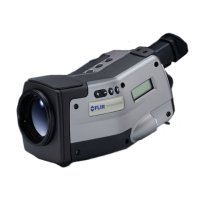For opaque materials τ
λ
= 0 and the relation simplifies to:
Another factor, called the emissivity, is required to describe the fraction ε of the
radiant emittance of a blackbody produced by an object at a specific temperature.
Thus, we have the definition:
The spectral emissivity ε
λ
= the ratio of the spectral radiant power from an object
to that from a blackbody at the same temperature and wavelength.
Expressed mathematically, this can be written as the ratio of the spectral emittance
of the object to that of a blackbody as follows:
Generally speaking, there are three types of radiation source, distinguished by
the ways in which the spectral emittance of each varies with wavelength.
■
A blackbody, for which ε
λ
= ε = 1
■
A graybody, for which ε
λ
= ε = constant less than 1
■
A selective radiator, for which ε varies with wavelength
According to Kirchhoff’s law, for any material the spectral emissivity and spectral
absorptance of a body are equal at any specified temperature and wavelength.
That is:
From this we obtain, for an opaque material (since α
λ
+ ρ
λ
= 1):
For highly polished materials ε
λ
approaches zero, so that for a perfectly reflecting
material (i.e. a perfect mirror) we have:
For a graybody radiator, the Stefan-Boltzmann formula becomes:
This states that the total emissive power of a graybody is the same as a blackbody
at the same temperature reduced in proportion to the value of ε from the graybody.
94 Publ. No. 1 557 536 Rev. a35 – ENGLISH (EN) – January 20, 2004
18.3 – Blackbody radiation

